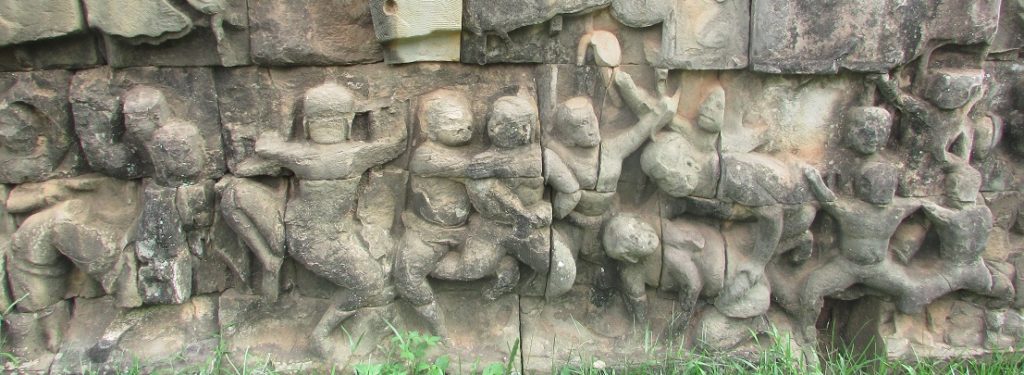Her report, which was shared by the premier shortly after, noted that the inscription was made during the 17th session of the Intergovernmental Committee for the Safeguarding of the Intangible Cultural Heritage held in Rabat, Morocco, on November 29.
The inscription, made at 10:31pm Cambodian time, is for the Representative List of the Intangible Cultural Heritage of Humanity (ICH).
Bokator is a martial art that was created by the ancient Khmer people to defend themselves and to fight wild beasts. The term bokator is derived from the mixed words “bok”, meaning “to pound”, and “tao”, which refers to the lion, the strongest carnivorous animal known to the ancient Khmer.
 Historical evidence of early bokator techniques can be seen carved on the walls of ancient temples. Many examples can be found at the 7th century Sambor Prei Kuk temple complex and later, in the 11th century Angkorian period, many movements of bokator martial arts were carved on the walls of temples, especially Angkor Wat.
Historical evidence of early bokator techniques can be seen carved on the walls of ancient temples. Many examples can be found at the 7th century Sambor Prei Kuk temple complex and later, in the 11th century Angkorian period, many movements of bokator martial arts were carved on the walls of temples, especially Angkor Wat.
Cambodia prepared documents to apply for the inclusion of bokator as a UNESCO Intangible Cultural Heritage of Humanity in Need of Urgent Safeguarding in 2008. The application was changed in 2017 to the Representative List of the Intangible Cultural Heritage of Humanity (ICH).
The third application was made in 2019, but due to the Covid-19 crisis, the documentation was delayed until 2021.
According to phnompenhpost.com












